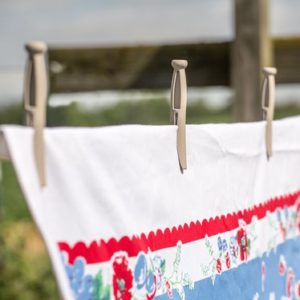It’s important to state your personal tastes at the outset. I don’t believe in a tidy garden. I consider its general mussyness  a sacred principle.
a sacred principle.
A productive garden is the goal, but I am of the stout opinion that country gardens should not be formal. Only aristocrats who could afford Capability Brown have formal gardens beside country houses; oddly, this 18th-century landscape architect affected and influenced the surrounding English countryside, giving it a rather manicured look.
For me, I like the wildish rough beauty in nature in my area of Ireland. Our garden reflects that ethos, so when we begin to put the garden to bed in autumn we adopt a rather relaxed attitude.
Frowsy has its own chic when it comes to gardening.
Generally speaking, we let the leaves fall where they will or gently push them toward the borders, where they will create leaf mould, a natural mulch. Of course, sometimes you don’t want a heavy fall of leaves. We have a holy well about 200 metres up our road. The leaves from the surrounding trees blow into the well and clog up the founthead.  Here Tony will rake up and bag up the leaves to help keep the well clear. Then he makes a few air holes in the black plastic and ties it at the top. Over winter the natural decomposition will create leaf mould to mulch the beds in spring.
Here Tony will rake up and bag up the leaves to help keep the well clear. Then he makes a few air holes in the black plastic and ties it at the top. Over winter the natural decomposition will create leaf mould to mulch the beds in spring.
As the polytunnel beds are vacated I give them a quick weed. We have some cow manure that has been maturing in a pile over summertime. We also have plenty of comfrey and nettle tops, too. So if we haven’t got enough cow pies, we can supplement it by spreading some comfrey leaves on top of the bed. I put a bit on, cover it with wet newspaper and add a layer of straw. This feeds the soil over winter so it will feed us come springtime. It also keeps it weed-free for spring planting.
This same method can be done for vegetable plots that have been harvested. Having had a couple very harsh winters we are also using that straw to mulch up some of the less “cast-iron” shrubs. We have tended to plant fully hardy shrubs but the first winter can sometimes carry off even the ones who are meant to be survivors.
Straw really is a country gardening bonus. “Every house should have a straw bale,” said one visiting friend, going quite misty-eyed and romantic over them. We mulch paths with it to make them non-slip. We mulch the strawberries and pumpkins with it. We make a winter duvet for the vegetable beds and tenderer shrubs from it. We insulate our New Zealand style compost bin with it. Frankly, there is nothing not to love about straw. We are lucky enough to have a handy source of it that gets delivered by Conor on his tractor.
But what we don’t do is tidy up too much. We leave the St. John’s Wort, Teasle and other bird-friendly plants to go to seed. This will be welcome fodder during the winter months.
Another task for winter readiness is to check on birdseed supplies and the bird feeders. Some get hammered in the autumn storms and need replacing. You need a few different types – some for seed, some for suet cake, some for mealworm, and some water  sources that cannot be accessed by your beloved cat, who is only stalking what its DNA has programmed it to prey.
sources that cannot be accessed by your beloved cat, who is only stalking what its DNA has programmed it to prey.
Wood piles and similar debris are boons for wildlife. Consider them cozy dens for another species to ride out snow or to shelter from lashing rain. Insects and hedgehogs alike are fond of them. Wild bees will winter in them, too.
Tidiness is not necessarily the friend of biodiversity. A wildish country garden cuts a certain dash like a woman who would wear gumboots with a hacking jacket over her ballgown. You just know she is a spirited woman, a bit whimsical and great fun. She’s probably a natural redhead and never worries that her hair is mussed by the wind.
If a garden was a woman (and nature always gets cast as the female gender) then this would be the template for my ideal garden.































